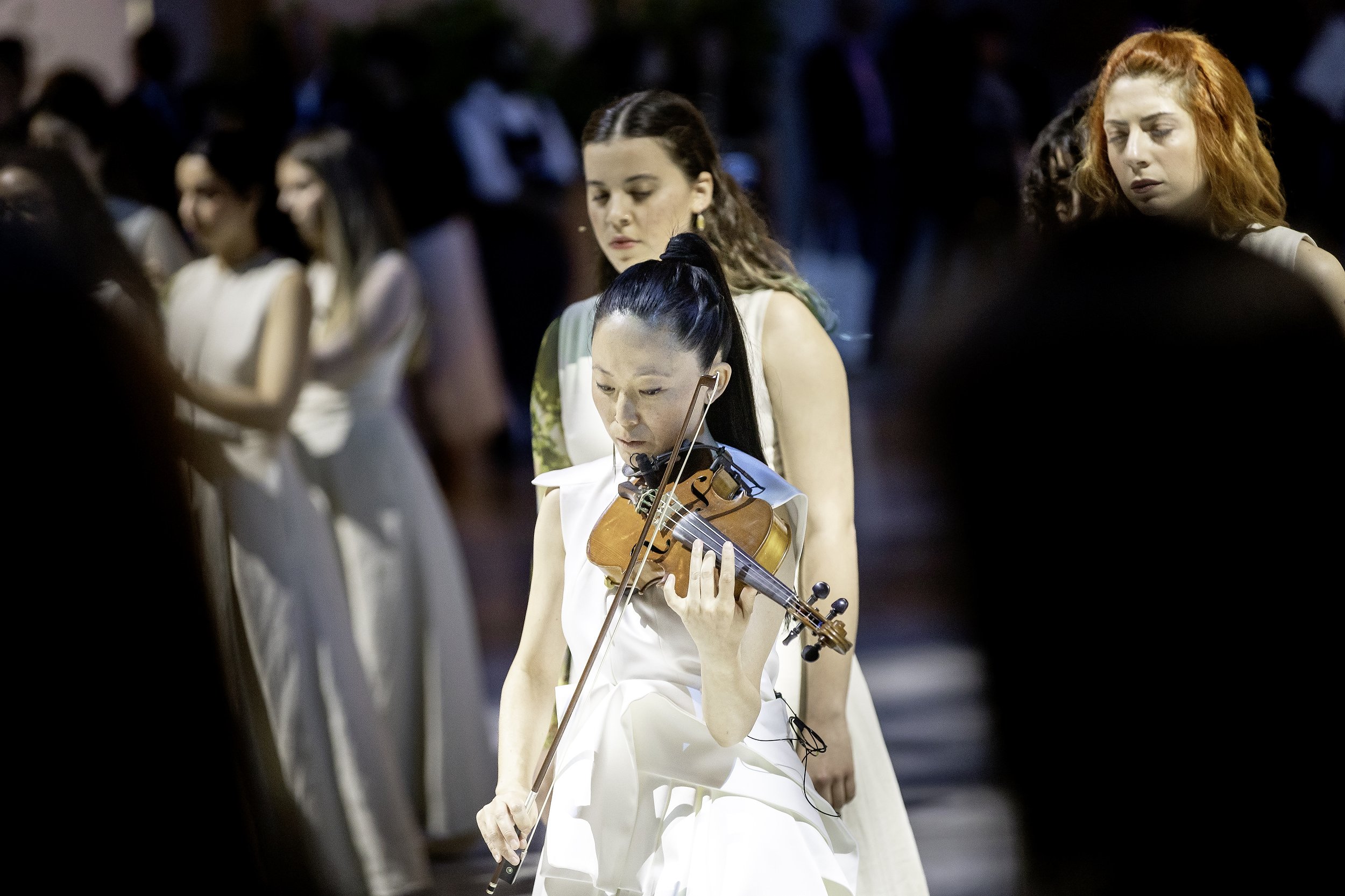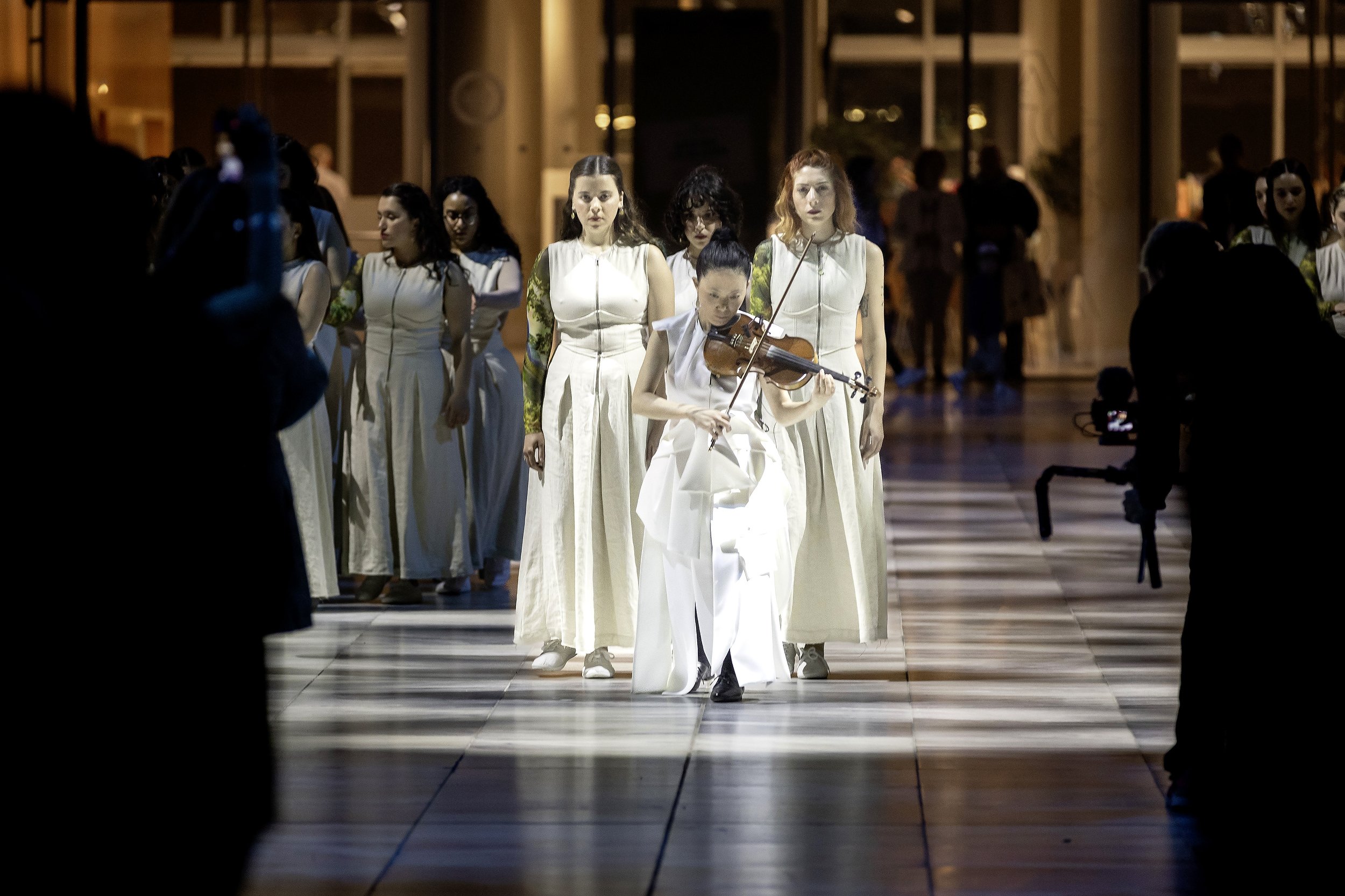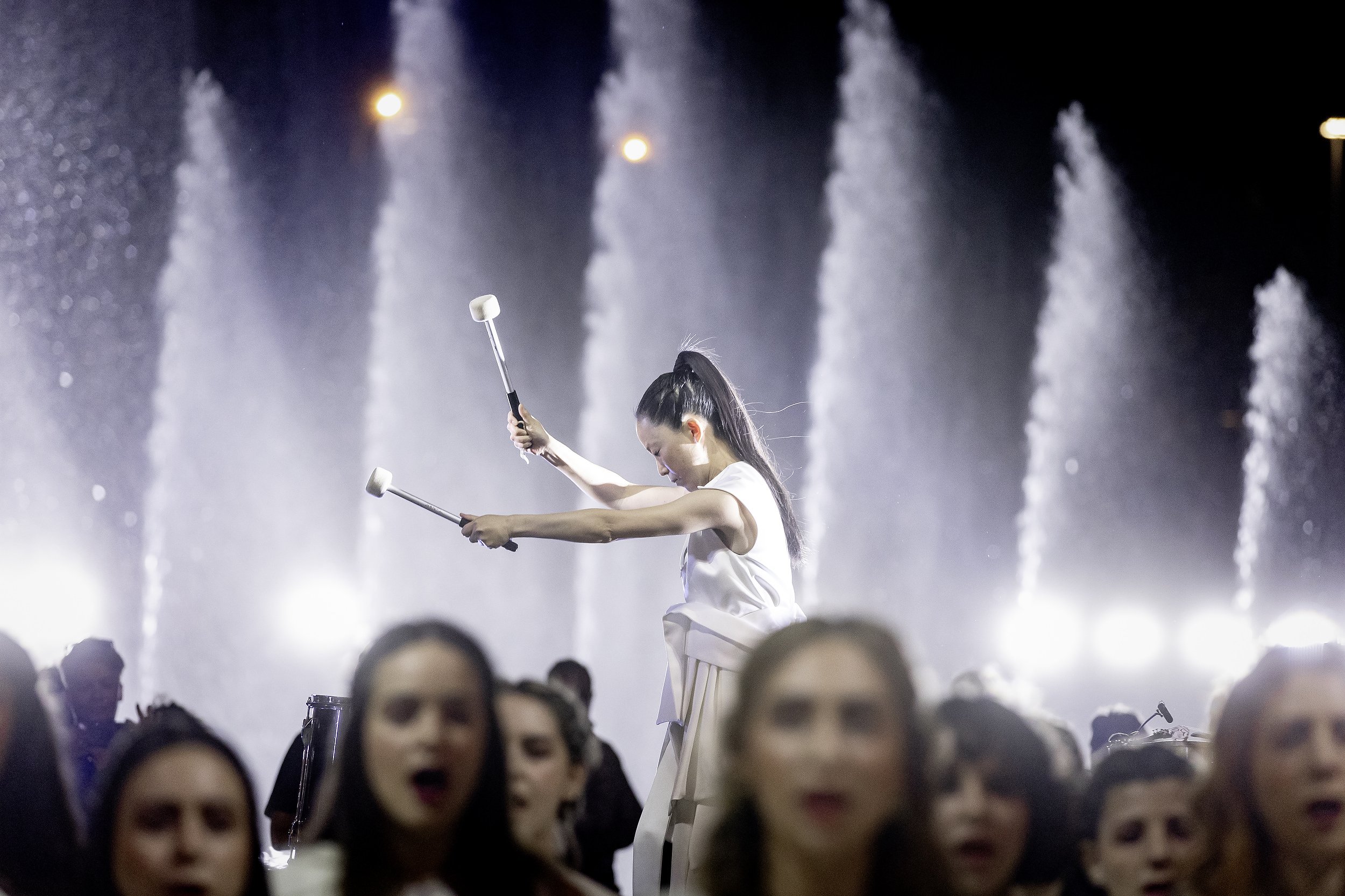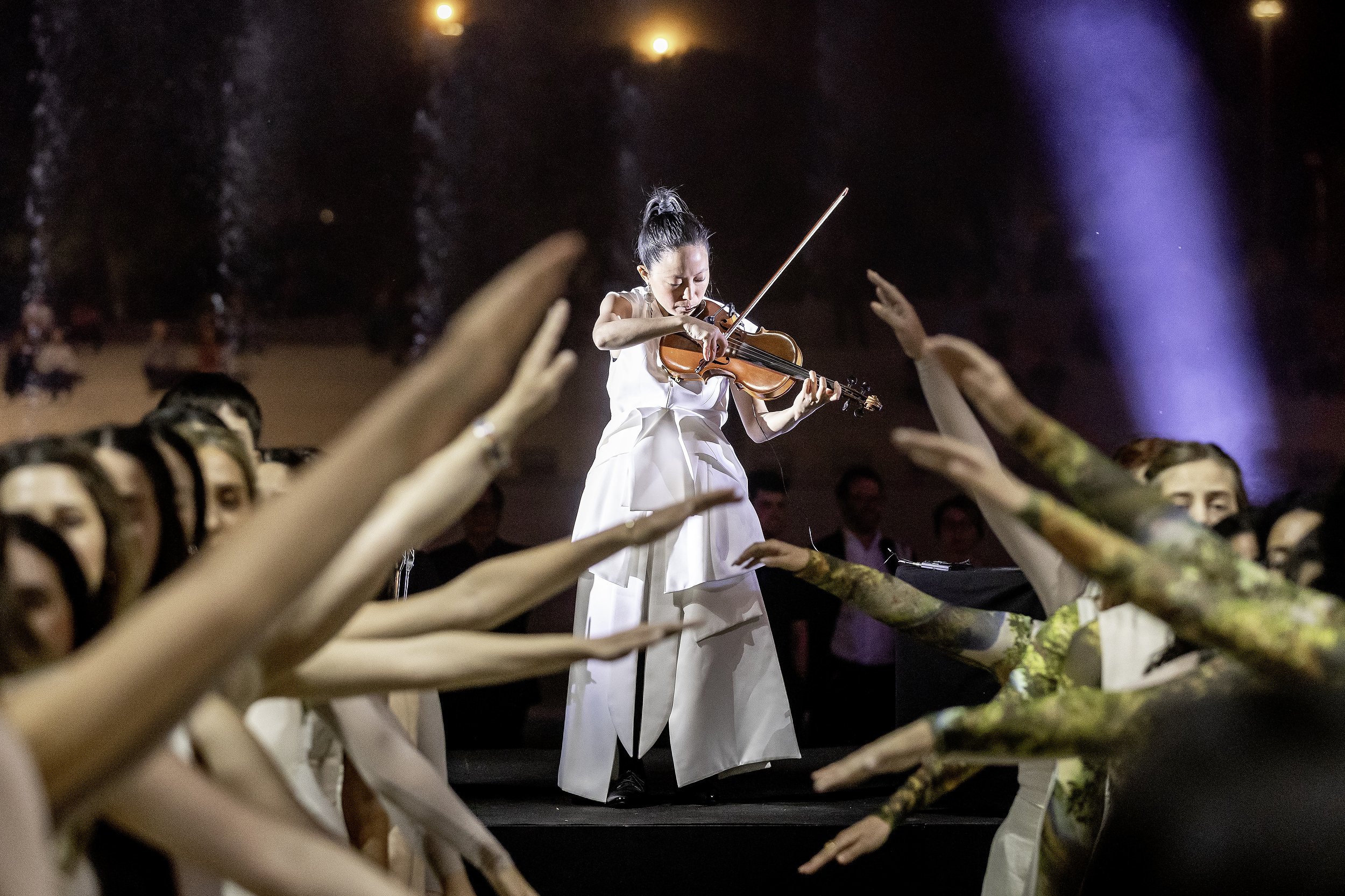ARTEMIS is a multi-platform opera that focuses on the relationship between the female body, metal, technology, and power. This opera is inspired by NASA's program Artemis, a space mission that will bring the first woman to the moon's surface in 2025, 56 years later than the first man moon landing. The opera ARTEMIS represents the archetype of the promise of technological gender equality in the 21st century, as the first woman on the moon would be an act of empowerment, a symbolic validation of the spaces and disciplines in which women can thrive. The opera's scope explores how femininity is reconfigured in a digital context, placing technology as a liberation mechanism, neutralizing and freeing the body from socially and culturally imposed restrictions and inequalities. As part of ARTEMIS, the opera will feature new installments of the Speaker Dress Project.
Visit the website of ENTYO, the sister project of ARTEMIS.
“ARTEMIS: Ouverture” | 2021
Commissioned by Emilia Romagna Teatro Fondazione - Teatro Nazionale in Italy & Columbia University's Institute for Ideas and Imagination in Paris.
Premiered at Teatro Bonci in Cesena, Italy.
“ARTEMIS: Fountain” | 2023
Commissioned by Rolex Mentor and Protégé Arts Initiative
Premiered at Stavros Niarchos Foundation Cultural Center in Athens, Greece.
“ARTEMIS: Tattoo” | 2024
Premiered at FUTUROS Festival and presented by New Latin Wave and Lincoln Center
THE SPEAKER DRESS PROJECT
ARTEMIS is the consequence of The Speaker Dress Project (SD) which is an interdisciplinary work that reflects on the relationship between human creativity/expressivity and technology, and the influence they have on each other. In this project, technology is approached as an extension of human gesture. In this sense, the SD aims to find new narratives, questioning the relationship between the performer and music-making. Instead of using electronic devices as an external interface to generate interactions, the SD turns the performer herself into an instrument by transforming the performer's movement, voice, and data into the sound source.
Technically, the SD consists of a wearable sound sculpture built with 100 to 130 speakers, 6 amplifiers, a portable sound processor, and microphones. The main sound source in SD1 is the friction between a contact mic and the performer’s skin, and in the SD2, the main sound sources are voice and breath.
SPEAKER DRESS NO.1 2014
CARNEGIE HALL: PERFORMANCE WITH THE SPEAKER DRESS NO.1
CREATIVE PROCESS OF “GAMA XV: PIECE FOR TWO SPEAKER DRESSES” WITH CLAIRE CHASE IN BROOKLYN NYC
SPEAKER DRESS NO.2 2016. PREMIERE OF “GAMA XV: PIECE FOR TWO SPEAKER DRESSES” AT THE KITCHEN NYC
CARNEGIE HALL: Q&A WITH MENTOR PHILIP GLASS. 2017
In 2016 I received a commission from flutist Claire Chase to design and build the SD2. Since her performance of the flute was the inspiration for the sculpture, I wanted to visually integrate air into the design of SD2. This visual manifestation was achieved by the design of an accessory: a mask with several tubing connected to a purse that emanated negative ions, becoming an emulation of an artificial “lung system”. This artifact was also the result of meditations about human vulnerability and how we rely more and more on technologies for survival. The aesthetic result was a hybrid creature (half-machine, half-human) walking in a new world, an unknown territory.
MASK OF SPEAKER DRESS NO.2
PART OF THE SCORE OF “GAMA XV: PIECE FOR TWO SPEAKER DRESSES”
WOMEN AND METAL
In 2016, when we shared the stage with Claire Chase in “Gama XV: Duo for Two Speaker Dresses” at the kitchen, we had the sensation that we were wearing armors, sonic armors. There was an empowering sensation to it, and not only because our bodies were able to scream - literally - but because of the material we were wearing: metal. Speaker Dress 1 and 2 incorporated more than 100 speakers each, and every individual speaker is surrounded by a small metal frame. As all the speakers are assembled together and wrap the performer’s body, the dresses resemble metal armors.
Metal is a synonym for empowerment in many ways. Since ancient times, metal gives power and prestige through currency, war, armors, and weapons. It also gave social mobility through dowry and matrimonial compensations. Metal is also the element of deep transformation; not only socioeconomic and political transformations but spiritual. For sculptor Tom Joyce, curator of the exhibition Striking Iron: The Art of African Blacksmiths, metal is also a great vehicle of memory and heritage. If metal is a material that communicates memory: what is the message we have to unveil? And in relation to the SD Project, which is the heritage of women wearing metal? What can a metal dress tell us about women's history? I started to search for examples of representations of women wearing metal throughout western history. Unfortunately, I only found a very small number of cases. Historically, WESTERN women were not allowed to socially wear metal.
METROPOLIS BY FRITZ LANG
EARLY REPRESENTATIONS OF JOAN OF ARC
MARIA FROM METROPOLIS
PACO RABANNE’S COLLECTION “TWELVE UNWEARABLE DRESSES” 1966
WOMEN AND CYBORGS
The SD Project reflects on the current relationship between women and metal, while also exploring how the human vulnerability is now manifested through the dependence on technologies for survival. This project echoes a reality (and most likely, a future) where technology has become an extension of the human body, an extension of ourselves. In this sense, the SD turns the performer into a new hybrid being: a human cyborg. From Greek mythologies to sci-fi movies, humans have expressed their primal necessity to create hybrid beings, to create semi-god or semi-monster creatures. Why do we have the need to incorporate another half into our narratives? Is that other half something that completes us? These new creatures are a response to our need for the supernatural, the mystery, and the unknown. What would be the current hybrid we are looking for?
Following Donna Haraway’s ideas, one of the most influential postmodern feminists writing on the body to date, this project incorporates her cyborg myth: there is no use for opposing the mythical to the organic; nor to oppose the organic and technical. Bodies represent, instead, cybernetic organisms: hybrid compounds of techno-organic embodiments and textuality. There is now a possibility for women to “rewrite” this techno-organic relationship. As Kate Cregan mentions in her book “The sociology of the body: Mapping the abstraction of embodiment”, computers, the Internet and the integration of medical technologies with the human body allow women to use them to their own end. To that extent, cyborg bodies are bodies beyond patriarchal constraints of sex and gender since technology goes beyond any categorization of gender.
WOMEN AND POWER
Society has imposed control over women through a variety of mechanisms such as fashion. Fashion can predetermine women’s behavior, and in many cases, constraint our actions, identities, and even our bodies. Some female wearable garments have been historically designed to fulfill certain aesthetic and cultural conventions to detriment of women. For example, in the Chinese tradition of footbinding, little shoes were meant to painfully model women’s feet. This body modification prevented their feet from developing naturally, measuring an average of 4 inches (11 cm). In western cultures, women also wore the corset, the cage crinoline, among other wearables that restricted their movement and constricted their bodies.
These accessories gave me the idea of creating interfaces inspired by mechanisms of control through fashion. This series of musical interfaces are inspired by the writings of Michel Foucault, who explores the relationship between power and domination of the body: I quote “The body is also directly involved in a political field; power relations have an immediate hold upon it; they invest it, mark it, train it, torture it, force it to carry out tasks, to perform ceremonies, to emit signs” end of quote. In this sense, the Speaker Dress project recognizes the body as a vehicle of meaning.
In development: “ARTEMIS: Aria”
Rolex fellow Londiwe Khoza will be the choreographer and dancer of “ARTEMIS: Aria” as part of the Rolex Collaboration fund.
Rolex fellow Naomi Alderman will be the creator of the Libretto for “ARTEMIS: Aria”, as part of the Rolex Collaboration fund.
C O M M I S S I O N E R S
”ARTEMIS: Ouverture”
Columbia University's Institute for Ideas and Imagination in Paris
Emilia Romagna Teatro Fondazione - Teatro Nazionale in Italy
“ARTEMIS: Chorale”
Stiftung Kunst & Musik für Dresden in Germany
“ARTEMIS: Recitative”
HELLERAU, the European Center for the Arts in Dresden, Germany
“ARTEMIS: Aria”
Rolex Arts Initiative | Collaboration Fund
“ARTEMIS: Fountain”
Rolex Arts Initiative | 20th Anniversary Celebration
A R T I S T R E S I D E N C I E S & F U N D S























































